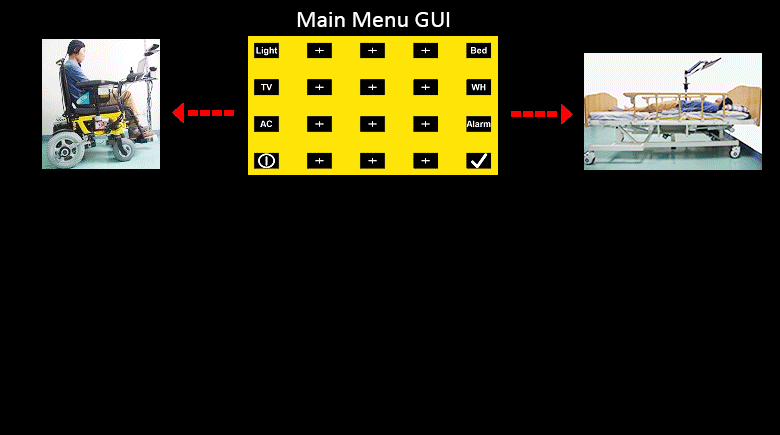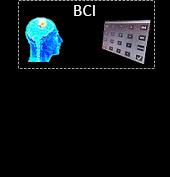
An important application of EEG-based brain-computer interface (BCI) is environmental control, which can improve the quality of life for paralyzed patients. However, most of the existing BCI-based environmental control systems were designed for the control of a single device without sufficiently considering the users’ real-life scenarios. Furthermore, it remains an open problem as to whether the performance of disabled people is similar to that of healthy users when using these BCI-based environmental control systems because these systems were generally evaluated by healthy subjects.
In this work, we present a BCI-based environmental control system that integrates household electrical appliances, a nursing bed, and an intelligent wheelchair with automated navigation function. Synchronous and asynchronous control modes are employed in different situations to provide more natural and practical control. Specifically, the asynchronous mode, which can infer from the ongoing EEG whether the user intends to execute his/her control through the BCI, is for switching the environmental control system on or off or for selecting a device (e.g., a TV) to control. Furthermore, a verification mechanism and several pseudo-keys are introduced into our paradigm to effectively reduce false operations in the asynchronous mode. Once a device is switched on, the synchronous mode, generally with a higher BCI detection performance of accuracy and speed than the asynchronous mode, is used for function selection, such as channel selection for a TV. Two experiments involving six paralyzed patients with severe spinal cord injuries (SCIs) were separately carried out in a nursing bed and a wheelchair. Experimental results indicated that all the SCI patients could operate the household electrical appliances, the nursing bed and the intelligent wheelchair by using the BCI with satisfactory. The proposed environmental control system can thus be used to assist severely paralyzed people with SCIs in their daily life and improve their self-care abilities.

